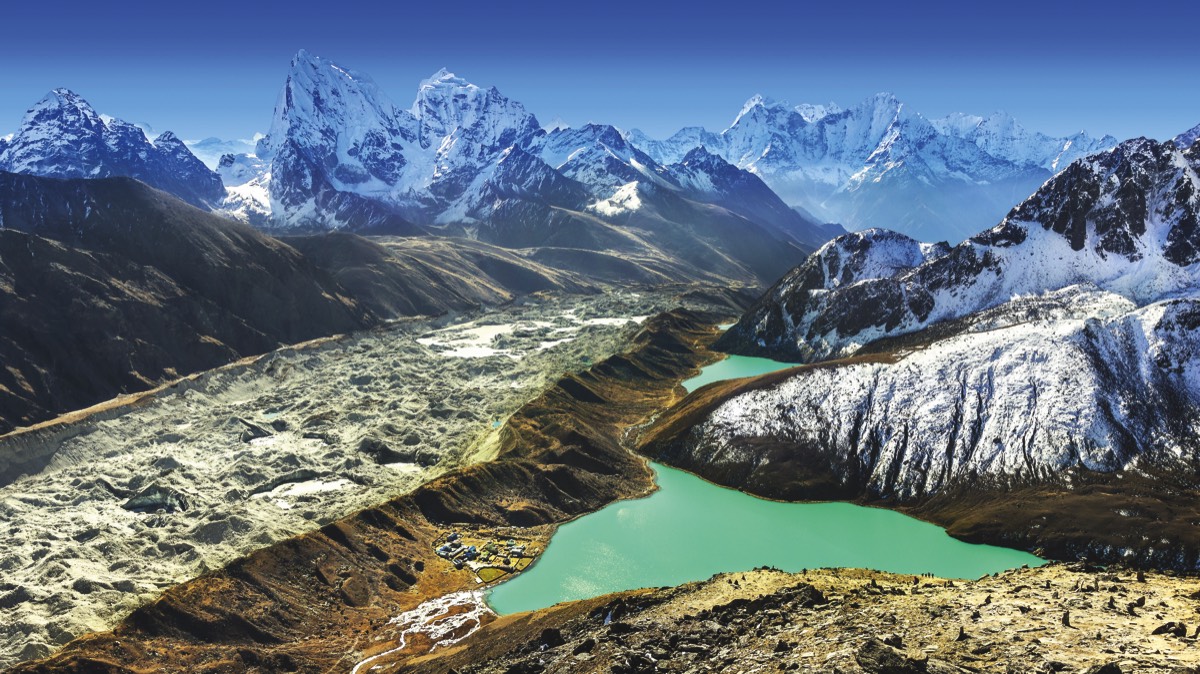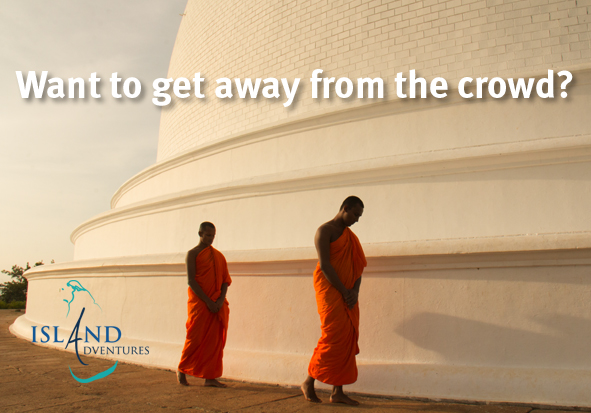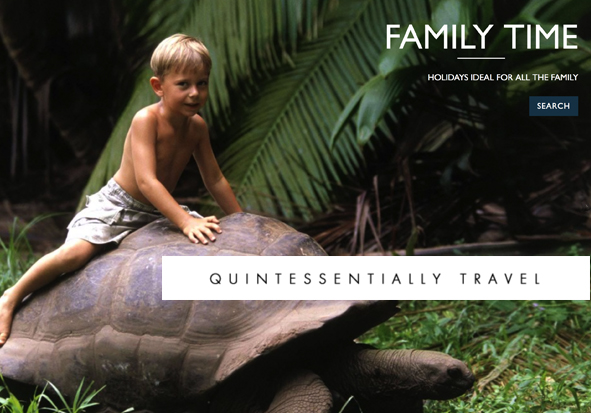TRAVEL
Surrey’s Premier Lifestyle Magazine
Wildlife and wanderlust
Nepal is a country of extremes with a total area covering over 147,000 square kilometres. It’s bordered by China in the north and India in the south, west and east. Divided into three geographical zones, the high Himalayas, the mid Himalayas or Mountainous Region, and the flat sub-tropical Terai region, Subhasish Chakraborty finds an old friend with whom to explore Nepal.
Below Photo copyright: Maciejbledowski | Dreamstime.com
Below Photo copyright: Maciejbledowski | Dreamstime.com

The high Himalayan region extends in the north from west to east at an altitude of 4,000 to almost 9,000 metres. The world famous peaks of Mount Everest, Kanchenjunga, Makalu, Dhaulagiri and Annapurna dominate the formidable range of eternal snows. The mid Himalayas consist of mountain ranges varying in height from over 1,500 to 4,877 metres. Below these lie the Churia range. Fertile valleys of various widths and altitudes lie between these mountain and hill ranges. The southern belt stretches east-west varying in width between 26 to 32 kilometres, and with a maximum elevation of about 300 metres.
Kathmandu, the capital city of Nepal, is full of shrines, temples, palaces, palace squares and ageless sculptures now an integral part of the city. Amazingly, Kathmandu is the only city in the world with seven World Heritage Sites (Cultural) located within a radius of 20 kilometres. Being in Kathmandu is like walking through the pages of history.
In Nepal, tourism is the most important industry after agriculture and contributes substantially to the quality of life for local people. As a socio-economic activity, tourism touches the life of every Nepali citizen in one way or the other. As such it’s imperative Nepal should resolve to maintain its tourism industry through sustainable and value based tourism.
I consider myself fortunate to have been able to serve the cause of Nepalese tourism and promote the concept of sustainable tourism in the late 1990s from Delhi and more recently. Last year, by a stroke of luck, one of my childhood school friends, Ang Tshering Lama, called and informed me about his rise as one of Nepal’s most renowned mountaineer and high-altitude trekking expedition organisers.
After a flurry of phone calls and lots of emails, I just couldn’t say no when Ang requested me to visit Nepal and see for myself the state of this Himalayan wonderland.
Ang and I grew up together and he was always fond of the outdoors. Moving to Delhi to further my education, we lost touch. No wonder then that we shared an emotional few minutes after I landed at Kathmandu’s Tribhuvan Airport on an evening flight and Ang was there to greet me.
After spending a couple of days at leisure and sightseeing in and around Kathmandu city, it was time to focus on the question of how best to make the sustainable tourism agenda a success. Leaving behind Kathmandu’s impressive heritage and warm Himalayan hospitality, Ang decided to embark on a trek to the Everest Base Camp to experience first hand the state of affairs in the high Himalayas.
However, with the news of inclement weather being flashed on television, we decided not to take any undue risk and instead opted for a helicopter trip. After fastening our seat belts and with the helicopter attaining height, the scene below of the city of Kathmandu seemed like a fairytale land, draped with temples and pagodas. More surprises awaited us as the helicopter whizzed past the Kathmandu valley and the magical sight of the array of some of the highest mountain peaks in the world flashed before our eyes.
Kathmandu, the capital city of Nepal, is full of shrines, temples, palaces, palace squares and ageless sculptures now an integral part of the city. Amazingly, Kathmandu is the only city in the world with seven World Heritage Sites (Cultural) located within a radius of 20 kilometres. Being in Kathmandu is like walking through the pages of history.
In Nepal, tourism is the most important industry after agriculture and contributes substantially to the quality of life for local people. As a socio-economic activity, tourism touches the life of every Nepali citizen in one way or the other. As such it’s imperative Nepal should resolve to maintain its tourism industry through sustainable and value based tourism.
I consider myself fortunate to have been able to serve the cause of Nepalese tourism and promote the concept of sustainable tourism in the late 1990s from Delhi and more recently. Last year, by a stroke of luck, one of my childhood school friends, Ang Tshering Lama, called and informed me about his rise as one of Nepal’s most renowned mountaineer and high-altitude trekking expedition organisers.
After a flurry of phone calls and lots of emails, I just couldn’t say no when Ang requested me to visit Nepal and see for myself the state of this Himalayan wonderland.
Ang and I grew up together and he was always fond of the outdoors. Moving to Delhi to further my education, we lost touch. No wonder then that we shared an emotional few minutes after I landed at Kathmandu’s Tribhuvan Airport on an evening flight and Ang was there to greet me.
After spending a couple of days at leisure and sightseeing in and around Kathmandu city, it was time to focus on the question of how best to make the sustainable tourism agenda a success. Leaving behind Kathmandu’s impressive heritage and warm Himalayan hospitality, Ang decided to embark on a trek to the Everest Base Camp to experience first hand the state of affairs in the high Himalayas.
However, with the news of inclement weather being flashed on television, we decided not to take any undue risk and instead opted for a helicopter trip. After fastening our seat belts and with the helicopter attaining height, the scene below of the city of Kathmandu seemed like a fairytale land, draped with temples and pagodas. More surprises awaited us as the helicopter whizzed past the Kathmandu valley and the magical sight of the array of some of the highest mountain peaks in the world flashed before our eyes.
After a thrilling half-an-hour flight, we reached the high Himalayan town of Lukla and the first brush of the mountain air that hit me as I disembarked from the helicopter was bone chilling. Being someone from the plains of India, exposed to scorching summer months, Ang knew I would be facing problems and provided me with a weatherproof jacket. As we checked in at the specialty tent, I saw in disbelief my own image in the mirror. With the jacket on, I already looked like a sturdy ‘mountain man’.
After an impromptu lunch, Ang and I decided to have a short nap inside the tent before venturing outdoors. Outside, a hurricane-like wind was blowing, and from the tiny hole in my otherwise sophisticated tent, I could see a group of cherubic young ones playing hide-and-seek, while womenfolk were busy cooking food in traditional wood-fired mud ovens. For someone like me, it was unbelievable how in spite of such harsh weather conditions, people could still survive and sustain themselves at such great mountain heights.
I was told by Ang that Lukla is a tiny Sherpa village located at an awesome height of 2,860 metres above sea level. Practically perched on Dudh-Koshi, Lukla is a trekker’s paradise and a popular starting point for treks to Mount Everest. In Lukla every lodge and tent owner knows Ang Tshering Lama’s name. There is lots of tented accommodation available in the village and not everybody visits to conquer Everest, although the number of Everest aspirants is sizeable, as I was to discover during my numerous mountain walks with Ang for company.
Nepal is a mountaineer’s paradise. From the days of the advent of modern tourism during the sixties, Nepal has beckoned trekkers from the world over. The focal point of attraction luring discerning trekkers are Nepal’s majestic and awesome peaks, blessed with eight of the world’s highest nestled in the lap of the Himalayas.
According to Ang, it’s not just the height that lures trekkers to Nepal as some of the world’s most challenging waterways are here. The region has one of the richest bio-diversities anywhere in the world, unparalleled National Parks and game sanctuaries and, above all, a diverse population with a great array of culture.
The Everest National Park can be visited throughout the year and covers 1,148 square kilometres of wilderness. As the name suggests, the Park includes the highest peak in the world – Mount Everest – and several other impressive, challenging Himalayan peaks.
What overwhelmed me most was the sheer richness of the flora and fauna of this region. Wild animals include the Himalayan Thar, Serow, Goral and the rare and elusive Snow Leopard. The Shey Phuksundo National Park harbours one of the world’s largest habitats of the Snow Leopard, Blue Sheep, Wolf and other rare wildlife species. Better known as the Hidden Valley of Crystal Mountain, the Shey Phuksundo National Park is less than a week’s trek and takes visitors nearer to one of the most desolate places on earth – the Tibetan plateau as it dips into Nepal. Thus, trekkers get to enjoy a slice of Tibetan landscape, culture and lifestyle whilst still being in Nepal. What more could you ask for?
After an impromptu lunch, Ang and I decided to have a short nap inside the tent before venturing outdoors. Outside, a hurricane-like wind was blowing, and from the tiny hole in my otherwise sophisticated tent, I could see a group of cherubic young ones playing hide-and-seek, while womenfolk were busy cooking food in traditional wood-fired mud ovens. For someone like me, it was unbelievable how in spite of such harsh weather conditions, people could still survive and sustain themselves at such great mountain heights.
I was told by Ang that Lukla is a tiny Sherpa village located at an awesome height of 2,860 metres above sea level. Practically perched on Dudh-Koshi, Lukla is a trekker’s paradise and a popular starting point for treks to Mount Everest. In Lukla every lodge and tent owner knows Ang Tshering Lama’s name. There is lots of tented accommodation available in the village and not everybody visits to conquer Everest, although the number of Everest aspirants is sizeable, as I was to discover during my numerous mountain walks with Ang for company.
Nepal is a mountaineer’s paradise. From the days of the advent of modern tourism during the sixties, Nepal has beckoned trekkers from the world over. The focal point of attraction luring discerning trekkers are Nepal’s majestic and awesome peaks, blessed with eight of the world’s highest nestled in the lap of the Himalayas.
According to Ang, it’s not just the height that lures trekkers to Nepal as some of the world’s most challenging waterways are here. The region has one of the richest bio-diversities anywhere in the world, unparalleled National Parks and game sanctuaries and, above all, a diverse population with a great array of culture.
The Everest National Park can be visited throughout the year and covers 1,148 square kilometres of wilderness. As the name suggests, the Park includes the highest peak in the world – Mount Everest – and several other impressive, challenging Himalayan peaks.
What overwhelmed me most was the sheer richness of the flora and fauna of this region. Wild animals include the Himalayan Thar, Serow, Goral and the rare and elusive Snow Leopard. The Shey Phuksundo National Park harbours one of the world’s largest habitats of the Snow Leopard, Blue Sheep, Wolf and other rare wildlife species. Better known as the Hidden Valley of Crystal Mountain, the Shey Phuksundo National Park is less than a week’s trek and takes visitors nearer to one of the most desolate places on earth – the Tibetan plateau as it dips into Nepal. Thus, trekkers get to enjoy a slice of Tibetan landscape, culture and lifestyle whilst still being in Nepal. What more could you ask for?
Mount Everest – cleaning up the mess
Back in Kathmandu, as we sat by the cozy fireplace at Ang’s home, he was a touch emotional about the sorry state of affairs in Nepal’s high altitude trekking and mountaineering sector. The South Col holds the key for mountaineers determined to climb Mount Everest. It’s the launching pad from which all expeditions make their way up to the summit. Considered the most hostile place on planet earth, it’s 7,900 metres above sea level, lashed by 100 to 140 mph winds and frozen by temperatures running below minus 40 to 100 degree Celsius.According to Ang, the region today enjoys the dubious distinction of having become the world’s highest graveyard. Strewn with garbage and dead bodies of unfortunate climbers, mountaineers dread having to camp there today. Sir Edmund Hillary and Tenzing Norgay climbed Everest in 1953. Then it seemed to be a feat. Today, anyone could do it. It is quite common to find 300 people from 15 teams simultaneously camped at the base camp. The numbers of climbers are rising. Two people climbed the summit in 1970, ten in 1980, but with the advancement of technology, as many as 72 had conquered Everest in 1990, and the number keeps on increasing every year.
The reason for this is that one can conquer Everest with state of the art equipment including titanium bottles, packed power bars and Gatorade for nourishment. Climbers wear six layers of space age thermal clothing, designed to give protection from temperatures up to minus 30 to 40 degrees Celsius. What is more, each climber has a handheld radio set for the progress of the expedition through satellites and computers. Climbers can call home and even send e-mails from the summit.
Attempts have been made to clean the area, but as part of the sustainable tourism agenda it’s imperative to complete the operation so that one of the world’s greatest natural wonders can be restored to its pristine glory. For many years, mountaineers worldwide have been clamouring that the Government of Nepal pass a law making it mandatory for expeditions to bring down the bodies of dead climbers. The Everest experience also has lessons with regard to mankind’s forays into virgin territories such as Antarctica and the unexplored realms of outer space, which are also becoming cluttered with debris of our civilisation.
During his lifetime, Sir Edmund Hillary vehemently drew the attention of the environmentalists, pointing out the critical area of neglect in caring for the environment. Now, with Everest already becoming a junkyard as well as a graveyard, a combined effort and co-operation will be required to rectify the situation. Once cleaned, a restricted and environmentally friendly climb to the summit is the only way to preserve one of the world’s greatest natural wonders.
essence info
For further information on high altitude trekking expeditions and mountaineering in Nepal: Ang’s Himalayan Adventures, P.O. Box 1384, Kathmandu, NepalWebsite: www.angshimalayanadventures.com
Email: ang.himalayas@gmail.com
Telephone: #977-1-4497192 and #977-9-841255380
“Everyone should feel the duty and the pressure to keep the mountains clean. More than anything else, it is the sheer number of people who are now making ascents of the mountain that is causing the problems.”
Paul Hart, mountaineer



